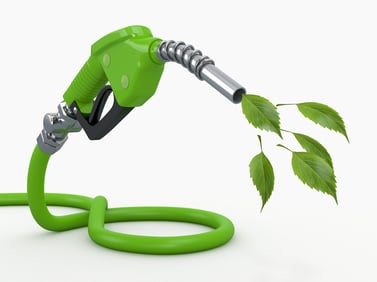Biofuel Energy – The Renewable FutureThere is no doubt that fossil fuels are a finite resource that will run out one day. It’s a commodity that takes millions of years to form, is difficult to get, and is not renewable. When we’ve used all of the fossil fuels on the planet, it will be an extremely long time before we will be able to acquire more. However, there are more options for fuel than using wood, solar, or electricity. The one that has recently made headlines is biofuel.

Biofuel comes from biomass (deceased organic matter) which can be continuously produced with sustainable farming practices. This type of fuel is considered renewable. Keep in mind that renewable does not equal green energy; renewable simply means that it won’t run out soon. While green energy is renewable, not all renewable energy is green. With that in mind, biofuel still produces greenhouse gases but it produces far less than traditional fossil fuels. Biofuel burns exactly the same way that gasoline, diesel, and jet fuel burn. It’s just harvested in a much more sustainable and renewable way.
What makes it sustainable is that using biofuel can significantly lower CO2 emissions over their lifetime when compared to fossil fuels. The crops used for biofuel do not displace normal food crops or jeopardize drinking water supplies. They also minimize impacts on biodiversity and do not contribute to the clearing or converting areas of high conversation value. Another goal is to have a positive impact where feedstock is grown. All of these steps ensure that the crops required for the most common generations of biofuel are a sustainable form of energy.
When looking at biofuel, there are four “generations” of biofuel creation, with the 1st being the most common and the 4th being the least common and all produce bioenergy.
- 1st generation is made from sugars, starches, oil, and animal fat. The fuels they create are well known. Biodiesel, ethanol and methane from a decomposing landfill are the most recognizable of these fuels.
- 2nd generation is made from non-food crops or agricultural waste. The most common non-food crops used are switch-grass, willow, and wood chips.
- 3rd generation come from algae or other quickly growing biomass sources.
- 4th generation is come from specifically engineered plants or biomasses that have higher energy yields, have lower barriers to cellulosic breakdown, or can be grown on non-agricultural land or bodies of water.
Biofuel is something that is becoming much more common. In fact, sometime this summer, United Airlines is having a flight where the plane will be running on biojetfuel. This will be the first time a domestic airline operates a regular passenger flight using an alternate fuel. United Airlines is so dedicated that they did a $30 million investment into the largest producer of aviation biofuel, Fulcrum BioEnergy. Other well-known companies that are producers of biofuel include DuPont, Boeing, and Waste Management.
The aviation industry is responsible for 12% of CO2 emissions and that number is steadily growing. They are trying to balance the scales so the industry doesn’t make the emissions any worse. With that goal in mind, they are set to achieve carbon neutrality by 2020 and using biofuel can help make that happen. If the aviation industry can make biofuel work, vehicles aren’t far behind.
Producing biofuel does have its problems. The main issue is a lack of farmland for both food and fuel; the limit on both is reflected in its cost. Finding the balance between the two is why although the conversion process is simple, fossil fuel is still cheaper than biofuel.
There is no “perfect fix” for our energy needs. Patience, avoiding rash decisions, and looking at good science is our best bet for the future. But the option and accessibility may be a good place to start.

